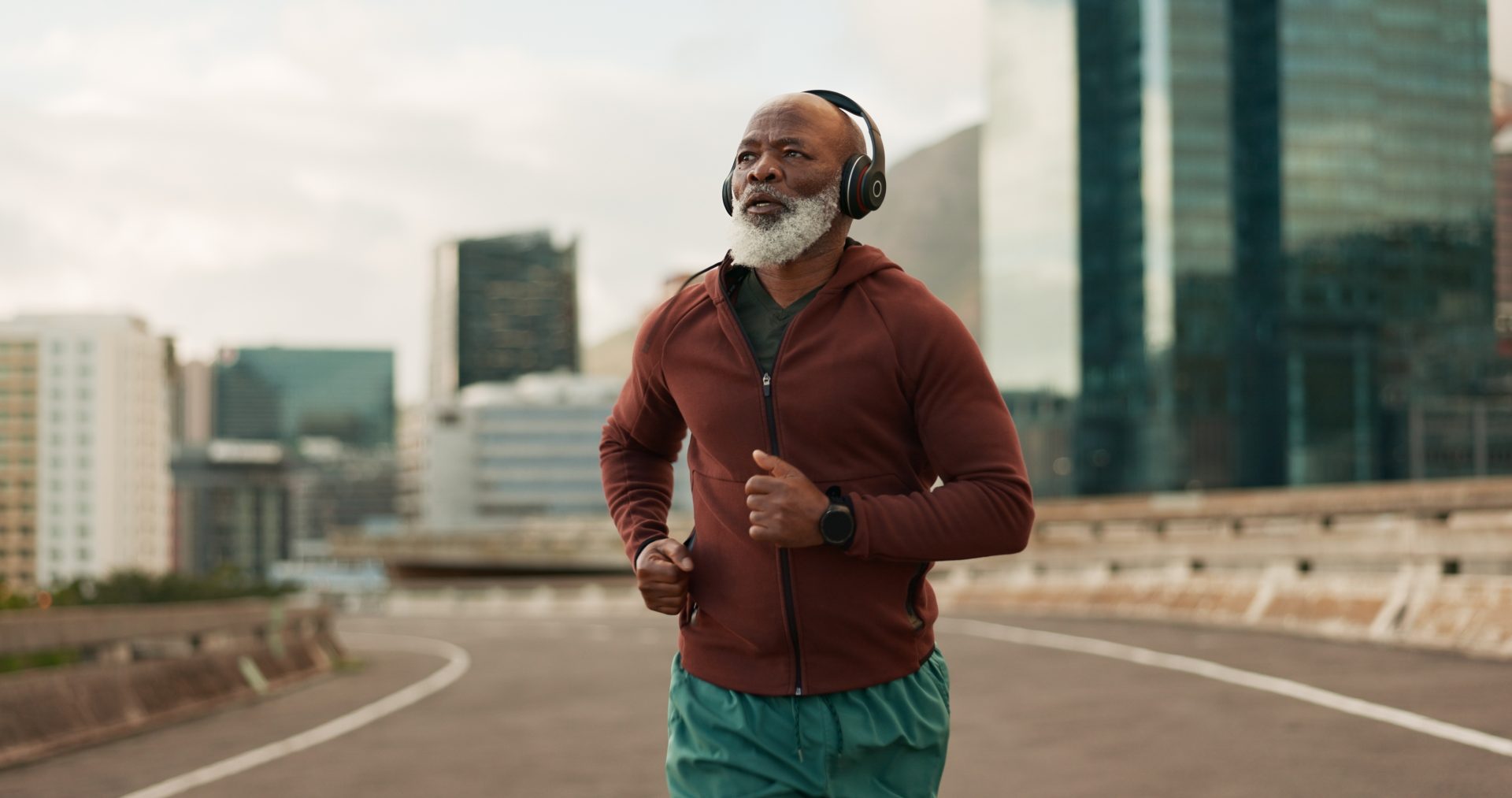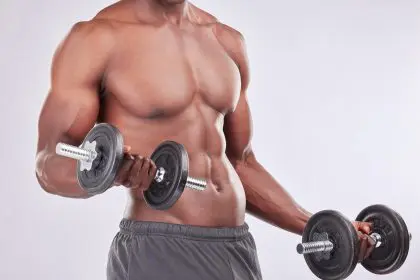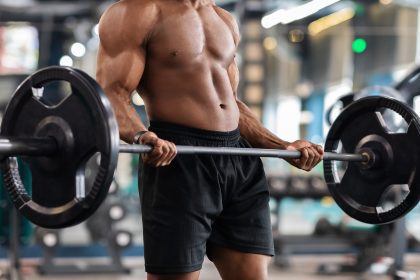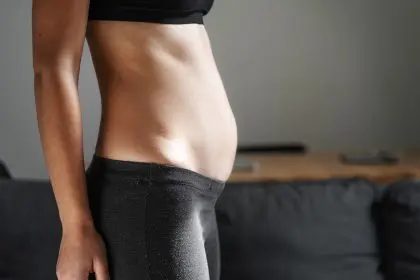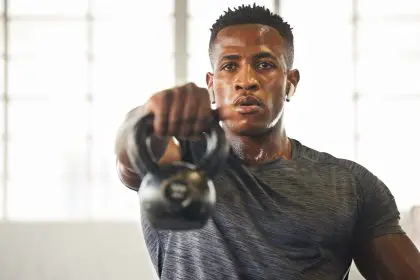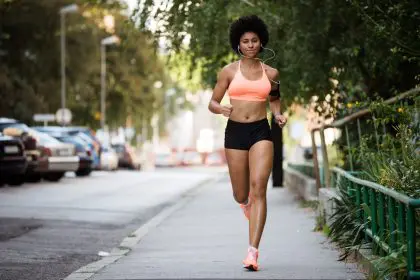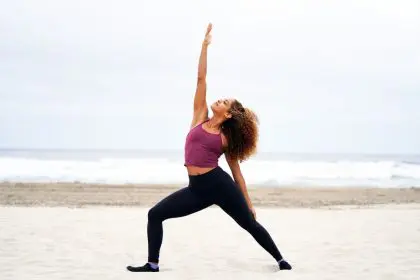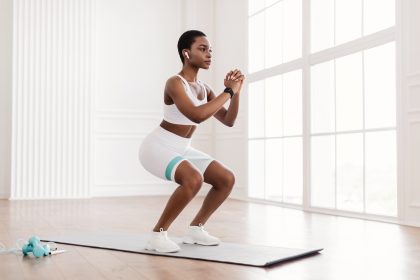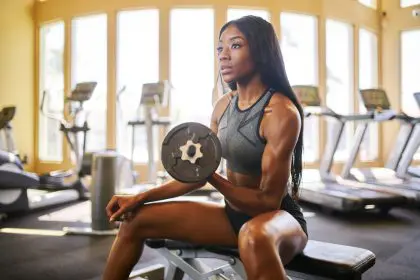After turning 60, maintaining physical strength becomes increasingly important for independence and overall health, yet traditional workout routines often need thoughtful adjustments to prevent injury and maximize benefits.
While the desire to stay fit remains strong among older adults, many face challenges like joint pain, reduced balance, and decreased bone density that can make standard exercise approaches uncomfortable or risky. Fortunately, with proper modifications, seniors can continue building vital strength in ways that respect their bodies’ changing needs.
The following five exercise modifications specifically address the most common physical limitations faced by older adults while still delivering substantial fitness benefits. Each adjustment has been developed to maintain effectiveness while prioritizing safety.
Modified squats for joint protection
Traditional squats place significant pressure on the knees and hips—areas particularly vulnerable in older adults. Modified versions allow for strength building without unnecessary strain.
Chair squats represent the most accessible modification for seniors with mobility concerns. Begin by standing in front of a sturdy chair with feet shoulder-width apart. Slowly lower your body as if sitting down, but stop just before touching the seat. Hold this position briefly before pressing through your heels to return to standing.
For those with more advanced mobility, wall slides offer another effective modification. Stand with your back against a wall, feet about 12 inches from the base. Gradually slide down until your knees form approximately a 45-degree angle, never exceeding 90 degrees to protect knee joints. Hold for 5-10 seconds before sliding back up.
These modifications reduce compression forces on knee joints while still engaging all major lower body muscles including quadriceps, hamstrings, and gluteal muscles—essential for maintaining independence in daily activities like rising from chairs and climbing stairs.
Upper body exercises with reduced strain
Pushing and pulling movements form the foundation of upper body strength, but conventional exercises like push-ups and pull-ups often prove too demanding for older bodies.
Wall push-ups serve as an excellent substitute for standard floor push-ups. Stand facing a wall at arm’s length distance. Place palms flat against the wall at shoulder height and width. Bend your elbows to bring your chest toward the wall, then push back to the starting position. This modification dramatically reduces stress on the wrists, shoulders, and lower back.
For pulling movements, seated band rows provide safe resistance without requiring hanging or pulling up body weight. Secure a resistance band around a stable object at mid-chest height. Sitting in a chair, grasp the band handles with both hands, arms extended. Pull the bands toward your body, squeezing shoulder blades together, then slowly return to the starting position.
These modifications effectively target chest, shoulder, and back muscles without placing excessive strain on joints or requiring extraordinary balance.
Balance training with stability supports
Balance exercises remain crucial for fall prevention in older adults but require modifications to ensure safety during practice.
Counter-supported balance stands offer an excellent starting point. Standing near a kitchen counter or sturdy table, lightly rest fingertips on the surface for support. Gradually shift weight to one foot, lifting the other slightly off the floor. As stability improves, reduce dependency on the counter support, eventually trying to balance without touching.
For more dynamic balance training, supported heel-to-toe walks provide challenge with safety. Position yourself arm’s length from a wall or hallway surface. Place one foot directly in front of the other, heel touching toe, with hand hovering near the wall for stability if needed. Take 10-15 steps this way, using the wall only when necessary to prevent falls.
These modified approaches develop the same proprioceptive systems and stabilizing muscles as traditional balance exercises while minimizing fall risk during the learning process—addressing a primary concern for many older adults.
Core strengthening without floor exercises
Traditional core exercises often require getting onto the floor and performing movements that stress the lower back and neck, particularly challenging for older adults with mobility or joint issues.
Seated core rotations offer an effective alternative. Sitting tall in a sturdy chair without arms, hold a light weight or water bottle with both hands at chest level. Keeping hips facing forward, rotate your upper body to one side, hold briefly, then rotate to the opposite side. This movement engages oblique muscles without stressing the spine.
For deeper core engagement, seated knee lifts provide excellent activation without floor work. Sitting at the edge of a chair with good posture, place hands on the sides for light support. Slowly lift one knee toward the chest while maintaining an upright position, then lower and repeat with the opposite leg. Adding a brief hold at the top position increases challenge.
These modifications effectively strengthen the core muscles that support posture and spinal stability while eliminating movements that might aggravate existing back issues or create difficulty getting up and down from the floor.
Cardiovascular adaptations for joint protection
Aerobic fitness remains vital for heart health and endurance in seniors but requires adjustments to protect aging joints from high-impact movements.
Water walking represents one of the most joint-friendly cardiovascular options. Performed in chest-deep water, the natural buoyancy reduces weight-bearing stress by approximately 80% while water resistance provides beneficial muscle engagement. Walking forward, backward, and sideways for 20-30 minutes delivers comparable cardiovascular benefits to land-based walking without impact concerns.
Seated marching offers another accessible option, particularly valuable during inclement weather or for those with significant mobility limitations. Sitting tall in a chair, alternately lift knees toward the ceiling at a pace that elevates heart rate. Adding arm movements—reaching overhead as opposite knees lift—increases intensity while remaining seated.
These cardiovascular modifications maintain heart-rate elevation and respiratory benefits while eliminating jarring impacts that might aggravate arthritic joints or increase fall risk—common concerns that otherwise might prevent older adults from engaging in regular aerobic activity.
Through these five targeted modifications, older adults can maintain comprehensive fitness routines that build strength, improve balance, enhance mobility, and promote cardiovascular health without unnecessary risk or discomfort. The key to success lies in recognizing that modifications represent thoughtful adaptations rather than limitations—allowing seniors to continue reaping exercise benefits safely throughout their later years.

